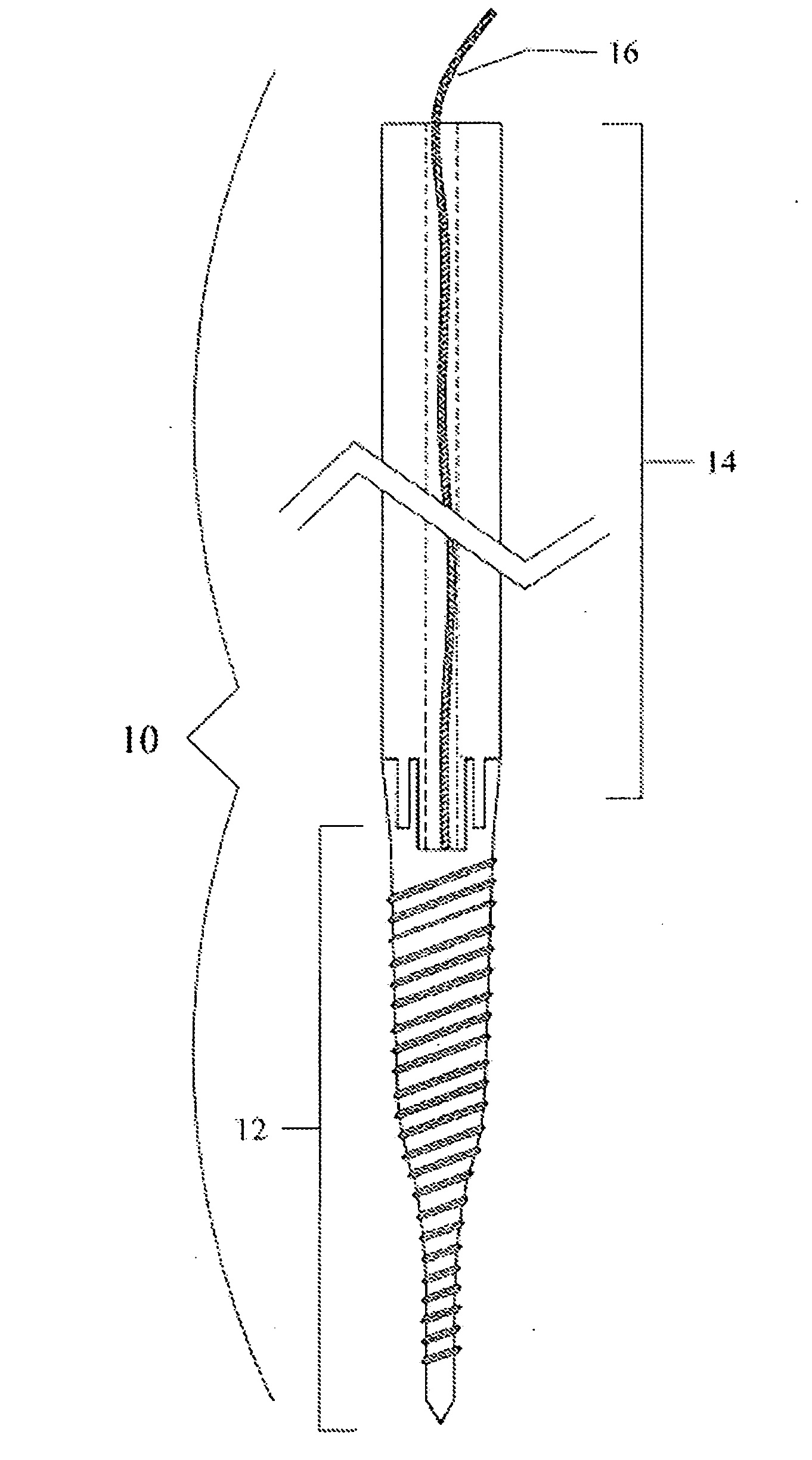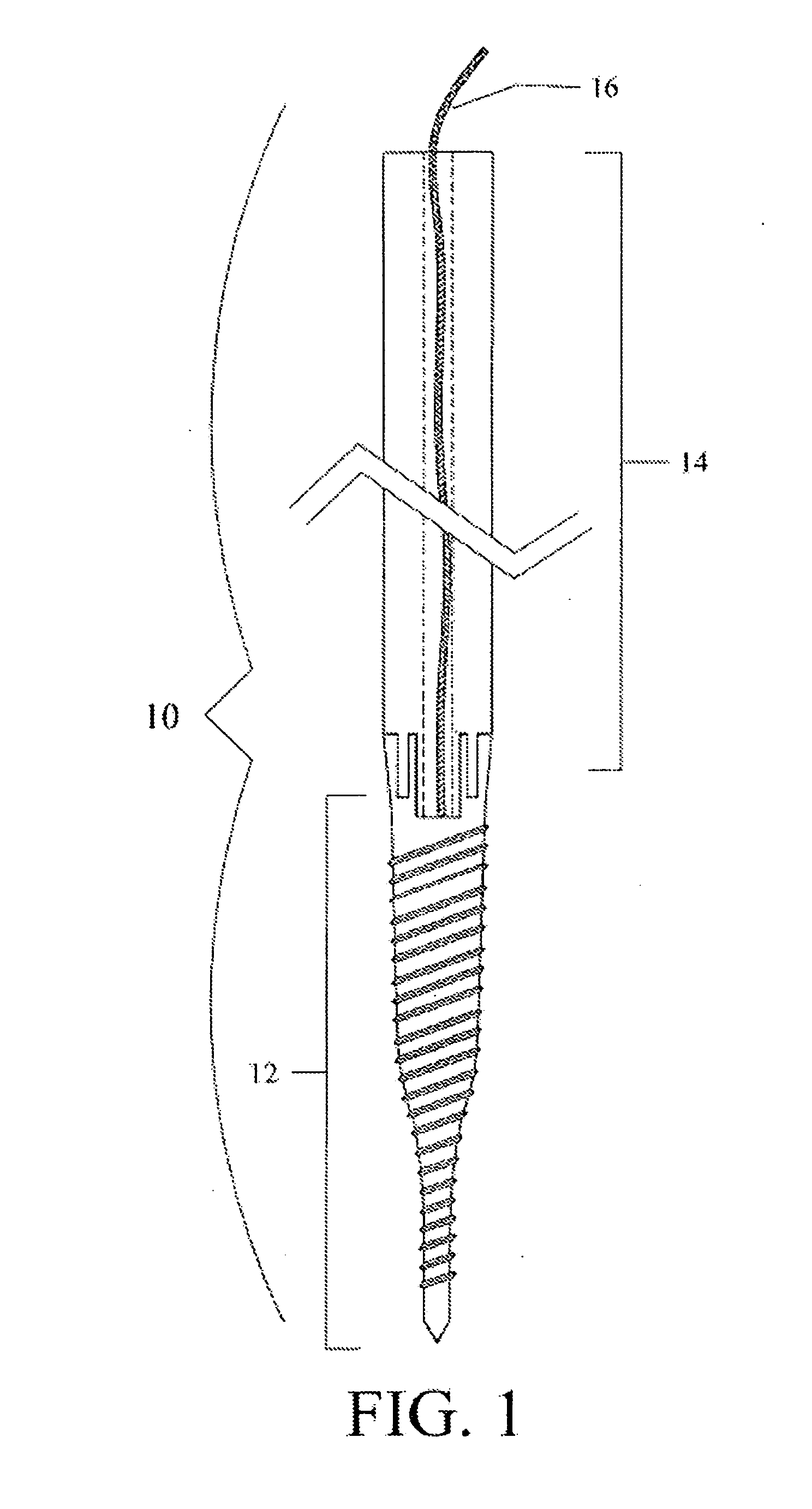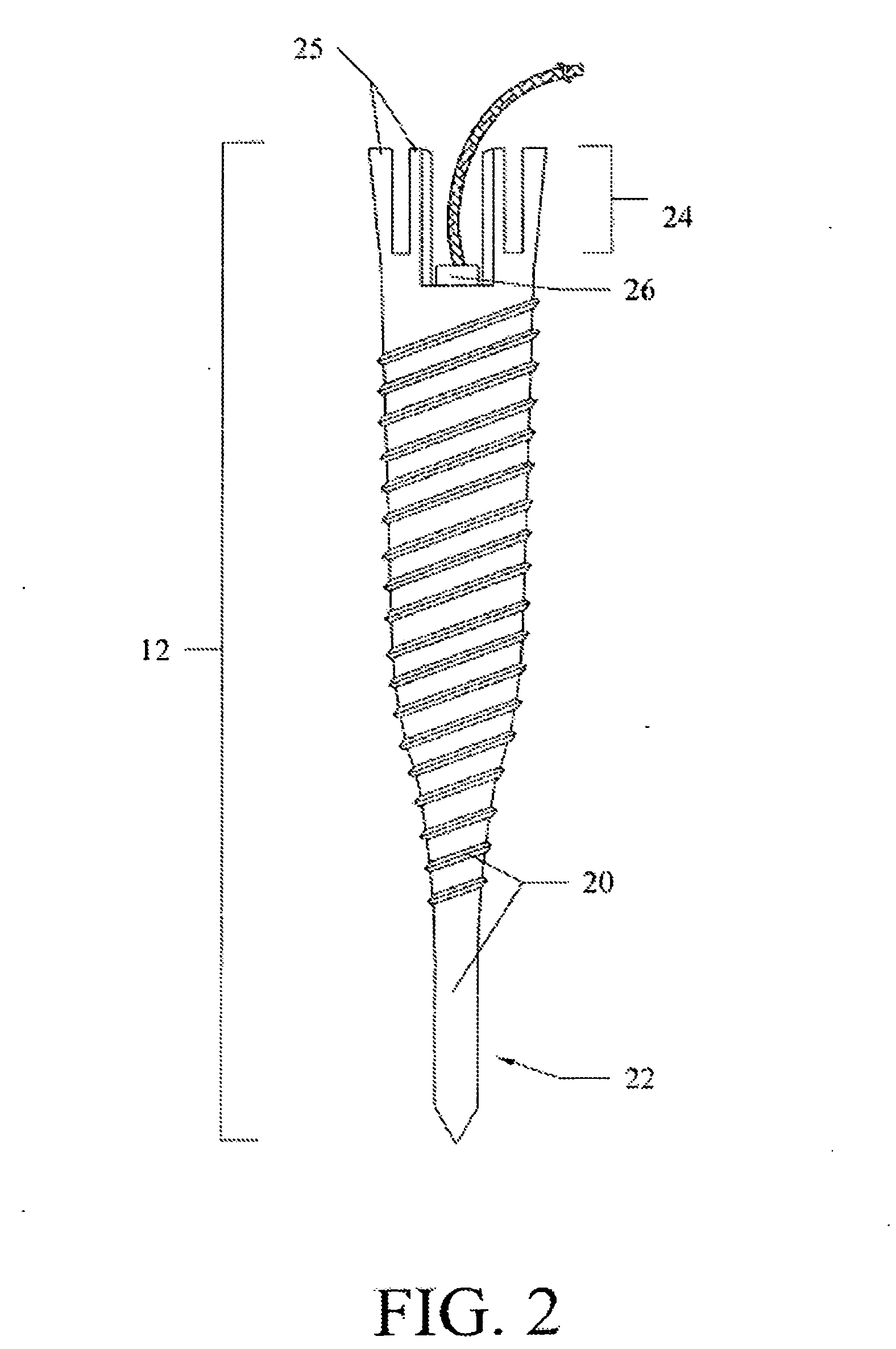System and Method for Pedicle Screw Placement in Vertebral Alignment
a technology of vertebral alignment and pedicle screw, which is applied in the field of system and method of pedicle screw placement in vertebral alignment, can solve the problems of patient discomfort, long recovery time, and traumatic time, and achieve the effects of reducing cost, improving surgical control, and speeding up the complexity of spine surgery procedures
- Summary
- Abstract
- Description
- Claims
- Application Information
AI Technical Summary
Benefits of technology
Problems solved by technology
Method used
Image
Examples
Embodiment Construction
[0034]The subject invention provides improved systems and methods for pedicle screw placement. According to the subject invention, the systems and methods described herein enable minimally invasive surgical procedures in pedicle screw placement without the need for a trocar needle and / or guidewires.
[0035]The systems described herein are made of biocompatible material for surgical implantation such as stainless steel, titanium and titanium-based alloys, combination metallic alloys and the like; various plastics, ceramics, biologically absorbable materials, and the like. Other biocompatible materials that can be used to produce the systems of the invention are well-known to the skilled artisan.
[0036]Referring to FIG. 1, a pedicle finder 10 is illustrated. The pedicle finder 10 comprises a pedicle anchor 12, an extender 14, and a flexible tether 16 that is attached to the pedicle anchor 12. Essentially, the pedicle finder 10 is a device that can have its tip member (pedicle anchor 12) ...
PUM
 Login to View More
Login to View More Abstract
Description
Claims
Application Information
 Login to View More
Login to View More - R&D
- Intellectual Property
- Life Sciences
- Materials
- Tech Scout
- Unparalleled Data Quality
- Higher Quality Content
- 60% Fewer Hallucinations
Browse by: Latest US Patents, China's latest patents, Technical Efficacy Thesaurus, Application Domain, Technology Topic, Popular Technical Reports.
© 2025 PatSnap. All rights reserved.Legal|Privacy policy|Modern Slavery Act Transparency Statement|Sitemap|About US| Contact US: help@patsnap.com



